If adventure is what you’re after, the Garmin Enduro 3 delivers. It skips a few of the Fenix 8’s creature comforts like an AMOLED face and built-in microphone and speaker, but makes up for it with a month of battery life, a solar charging ring, and the same reliable activity tracking you expect. It’s lighter and more affordable than its predecessor, making the Enduro 3 a great buy for long treks away from home.
Given my choice, I’m a small tech guy. I’d rather game on an Analogue Pocket or Lenovo Legion Go than on a PlayStation 5, and my preferred phone has a screen no larger than 6.3 inches. To me, it’s tough to beat the flexibility of having extra space in my backpack or my pockets. Usually, that love of smaller devices extends to the watch on my wrist, too, with the featherweight Coros Pace 3 guiding me through my most recent marathon. Right now, though, the massive Garmin Enduro 3 is trying its best to change my mind — and it’s working.

Size really does matter
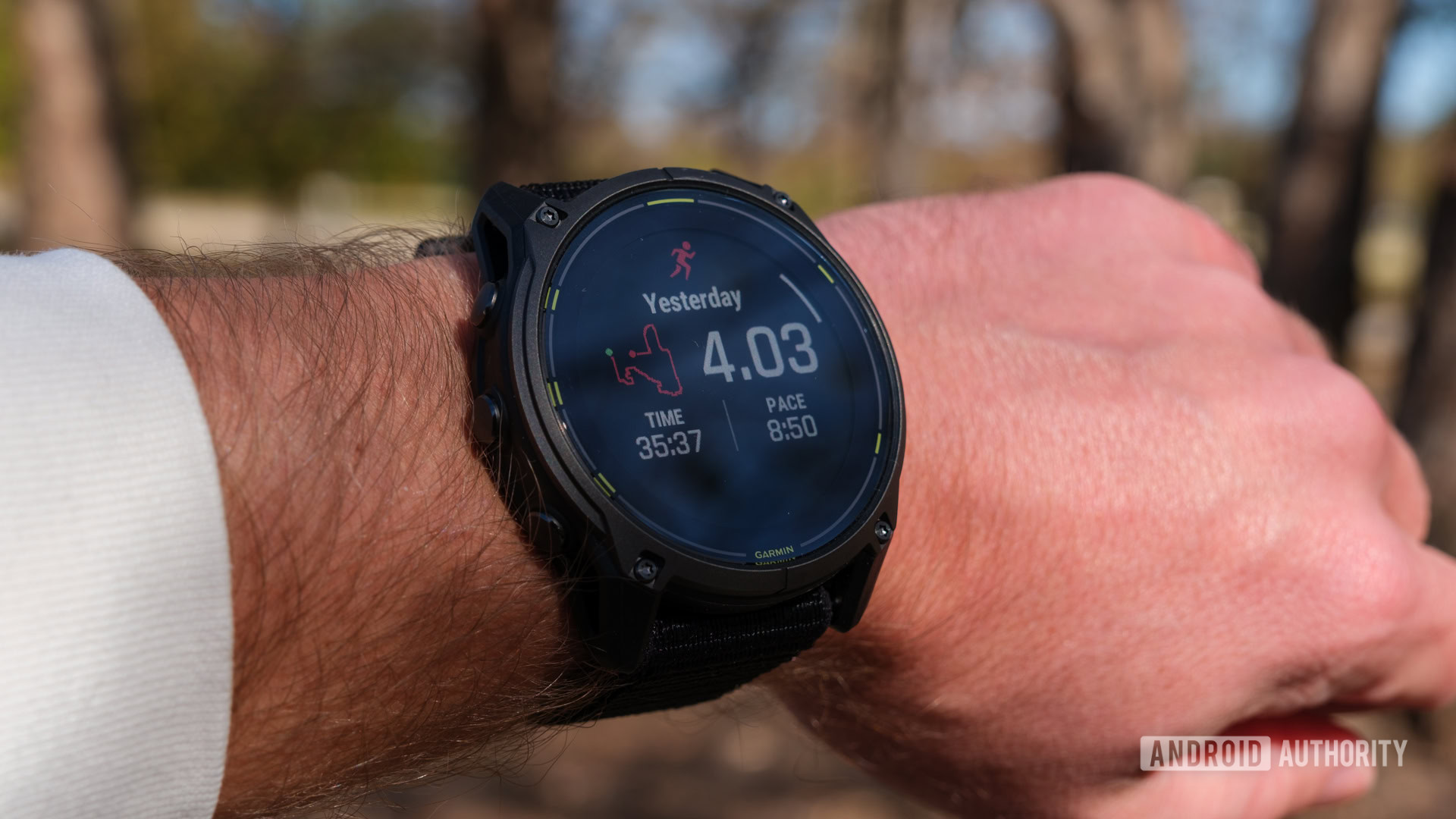
Ryan Haines / Android Authority
Perhaps the real reason I’m a small tech guy is because I’m a small guy. Watches that are too large tend to look like Captain America’s shield on my wrist, and I sometimes feel slightly ridiculous while wearing them. However, I’ve spent my fair share of the last few years with everything from the HUAWEI Watch GT Runner to the Garmin Enduro 2 on my wrist, and I’ve somewhat accepted my fate. Do I wish that everything came in a more democratic set of sizes? Sure do. I think everyone could take a page from Google’s smaller Pixel 9 Pro and offer a smaller size without hobbling it on the specs and features side. However, I also know that some of the best smartwatches are usually as large as they are to maximize, well, everything.
The Garmin Enduro 3 is no exception. It looks almost like the largest version of Garmin’s Fenix 8 or Epix Pro 2, just a little thicker — if you can believe it. This beast of a wrist pancake sits at a whopping 15.7mm thick, and it’s noticeable. It’s a full millimeter thicker than the Fenix 8 AMOLED that I just finished using, and I’ve felt the difference more than I thought I would. Thankfully, it’s not much of an issue while running or biking, but the climbing gym is a different story. I tend to use Garmin’s bouldering activity to track my climbs (or falls), and I’ve run into a few spots where I’ve reached for a hold, only to smack my watch against the plastic itself. So far, there’s only one noticeable scratch on the titanium bezel, but a thinner watch might have escaped unscathed.
The Garmin Enduro 3’s durable plastic case makes a massive watch feel remarkably light and comfortable.
When you hear about a watch this thick, though, I can imagine the first thing that comes to mind — it has to be heavy. Usually, I would agree with you — it fits right in with the idea that heavier things are somehow more premium or durable. This time, that instinct is entirely wrong. I often forget that the Enduro 3 is on my wrist because of how shockingly light it is. With the nylon UltraFit band attached, the behemoth of a smartwatch only weighs 63g, which is nearly 40g lighter than a stainless steel Fenix 8 with the same 51mm case. Somehow, Garmin also ditched about 7g from its previous Enduro 2, which is especially impressive considering the battery life is advertised as two days longer, usually indicating a larger, slightly heavier battery.
At first, I wasn’t sure how Garmin managed to shave that much weight, but I think it’s a mix of the default titanium bezel with the lighter all-over polymer case. The Enduro 3 puts all of its toughness up front, pairing the titanium bezel and sapphire glass display with a predominantly plastic body, while the Fenix 8 and Enduro 2 use a metal back cover, adding toughness and weight. I think the plastic back makes a bit more sense, as you’re probably not going to smack the heart rate sensor against anything hard in your day-to-day usage. It’s not winter here in the Mid-Atlantic just yet, but I’d imagine I’ll be glad to have less conductive plastic against my wrist over an icy metal disk once it gets cold.

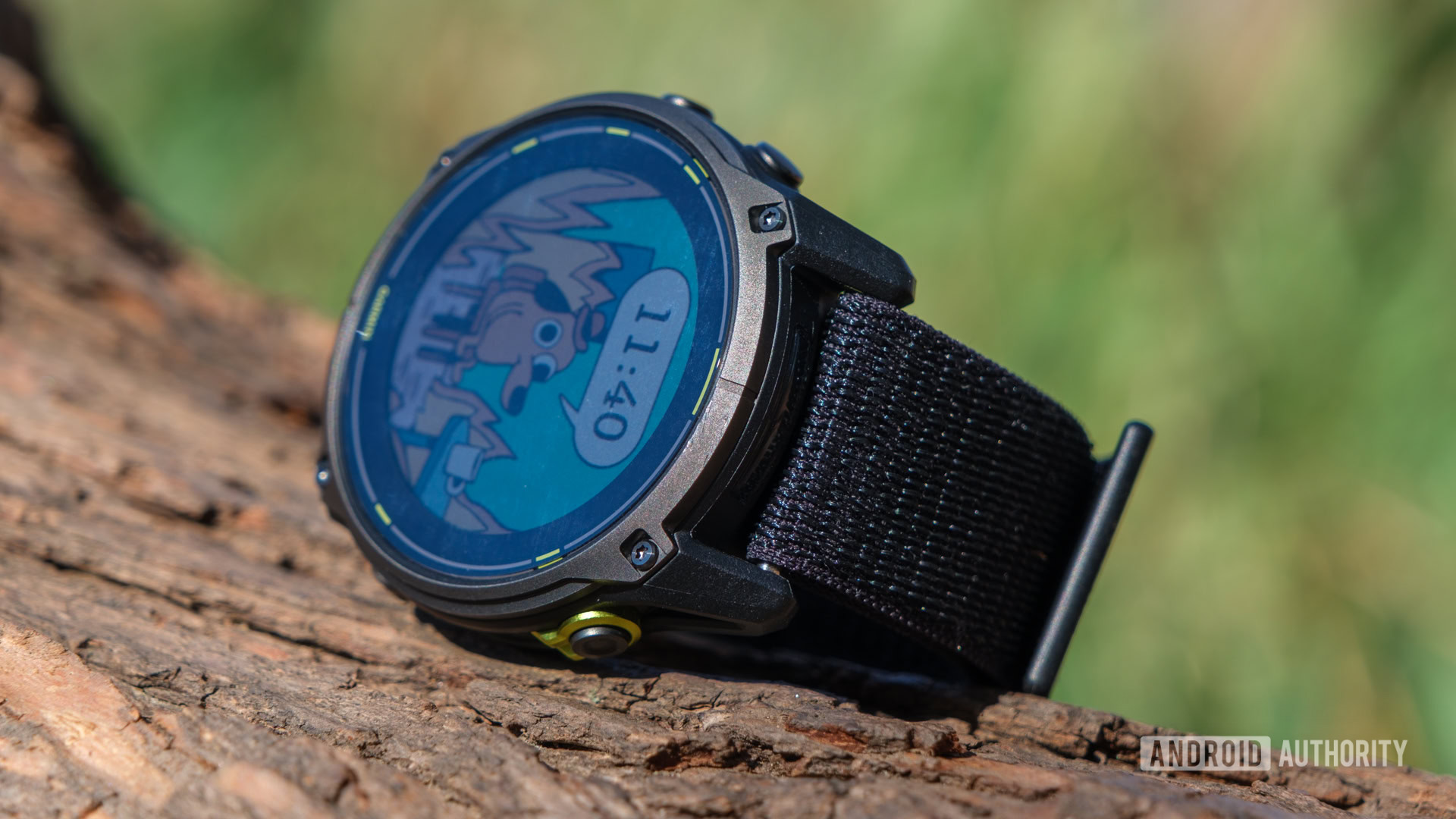
We’re not quite to those days yet, but when we reach them, I’m sure I’ll have to charge my Enduro 3 for the first (or maybe second) time. Everything about this GPS watch seems designed with one thing in mind — extra battery life. The large case allows for a larger cell — though Garmin doesn’t specify capacity — and the 1.4-inch watch face comes wrapped with a slim solar charging ring that could technically make the Enduro 3 last forever with the correct battery settings. I’ve mostly kept mine in smartwatch mode, though, which tops out at 36 days of standard usage or 90 days when maximizing your solar charging.
Also, while I can accept that the Garmin Enduro 3 will always look massive on my wrist, I’m not sure I’m convinced by Garmin’s UltraFit nylon watchband. While I like that it’s easily adjustable thanks to panels of hook and loop fabric at each end, I have the same problem I had with the Coros Pace 3 — I’m a sweater. It’s not Garmin’s fault, but I’m typically pretty sweaty by about mile two of a run, and all that moisture has to go somewhere. Unfortunately, the Enduro 3’s solution seems to be sopping it into the fabric watchband, which feels gross once I finish my workout and stop for coffee. Damp, cold sweat on your wrist isn’t the best feeling if you know what I mean. Thankfully, you can swap it out for a better watchband without much effort, but Garmin doesn’t sell an Enduro 3 with an alternative right out of the box.
How can you say no to this many activities?
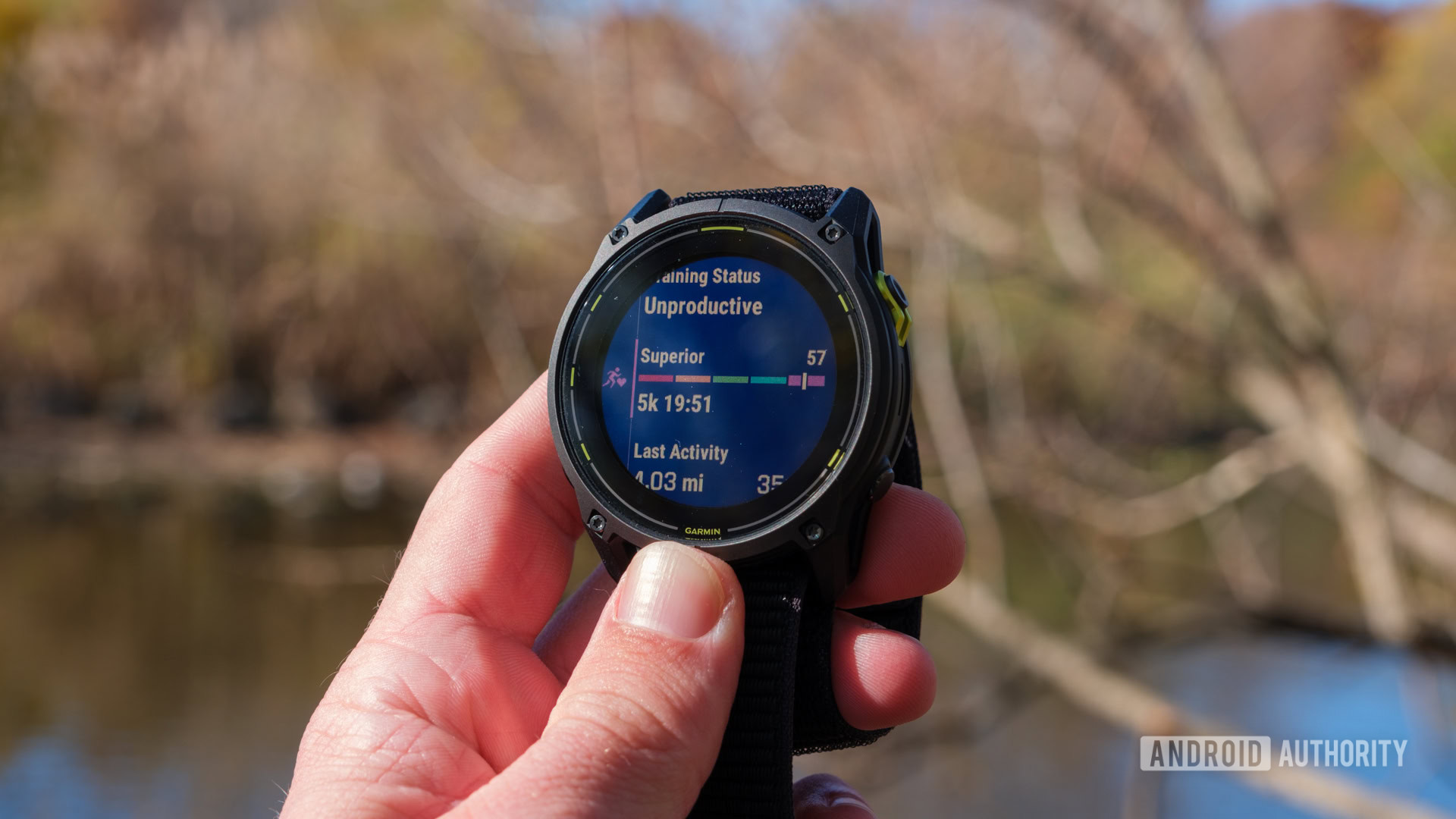
Ryan Haines / Android Authority
With only five weeks between the last two marathons I ran — something I don’t recommend doing — the Enduro 3 slotted in as my much-needed training companion. While training for one marathon is hard, finding a way to maintain that fitness for five extra weeks without getting injured is even more challenging. So, while I’ve primarily been relying on the Enduro 3 as a road-running wearable, it’s also come in handy for a few trips to the climbing gym, a bike ride or two, and the first week of my rec league soccer team’s new season. So far, it’s handled everything I’ve asked of it as a fitness tracker and done so without ever asking for a charge.
And yes, you could say, “Of course it hasn’t needed a charge, you haven’t been wearing it for a full month,” and you’d be correct. However, my Enduro 3 didn’t arrive with a full battery, it came with about 55% charge remaining. Factor in the extra battery drain while setting the watch up and running it through an update or two, and we’ll say the watch was half full by the time I set out for my adventures. So, when I tell you that the Enduro 3 sits here at a cool 19% charge after two weeks of activity tracking, it certainly looks like Garmin’s advertised 36 days is within reach, even with limited sunshine for the solar ring to take advantage of in the last week or so.
To this point, the highlight of my time with the Enduro 3 has been draining my Body Battery with a 20-mile long run while helping a few of my friends prepare for the Philadelphia Marathon. Collectively, our goal is to pace a few marathon debutants to a finish time of under four hours, which means maintaining a pace of around nine minutes per mile. That’s slightly less than race pace for me, so I popped into Garmin Connect to set up a workout with pace reminders to keep me on track. When the morning of the long run came, I was able to hop into the workout I’d created and keep our little training pack of four runners hovering right between the 8:45 and 9:00 marks for the entire morning — a pretty good sign for when we add six more miles to the end.
Of course, building workouts and getting pace reminders from Garmin is nothing new. I’ve been doing it for about as long as I’ve been wearing Garmin watches. However, with the improvement in wrist-mounted health tracking, I was curious to see if the Enduro 3 had any new tricks in store. And the answer is, well, not really. It’s almost exactly the same as the Fenix 8 under the hood, meaning that it pairs the fifth-generation optical Elevate heart rate sensor with a bevy of tracking-ready sensors. There’s one omission, though — the depth sensor that’s good down to 40m — so if you’re an avid diver and a distance runner, this might be one to skip.


Anyway, as far as the things the Enduro 3 can track, it nails them. Throughout our 20 miles, the watch kept an accurate log of my heart rate and elevation — both of which were surprisingly varied as we covered the rolling hills around the Baltimore-Washington International Airport. They weren’t incorrect — Garmin’s assessment of my overall effort matched my own — but I was surprised to see my heart rate tick above 160 beats per minute once or twice until I remembered some of the sneakier hills along our route. Those hills don’t reflect well on the Enduro 3’s map, but that might be because the geography around BWI isn’t exactly exciting. I grabbed a snippet of the one area where we crisscrossed the same path a few times to see if the watch could put me on the correct side each time, and it did so without issue.
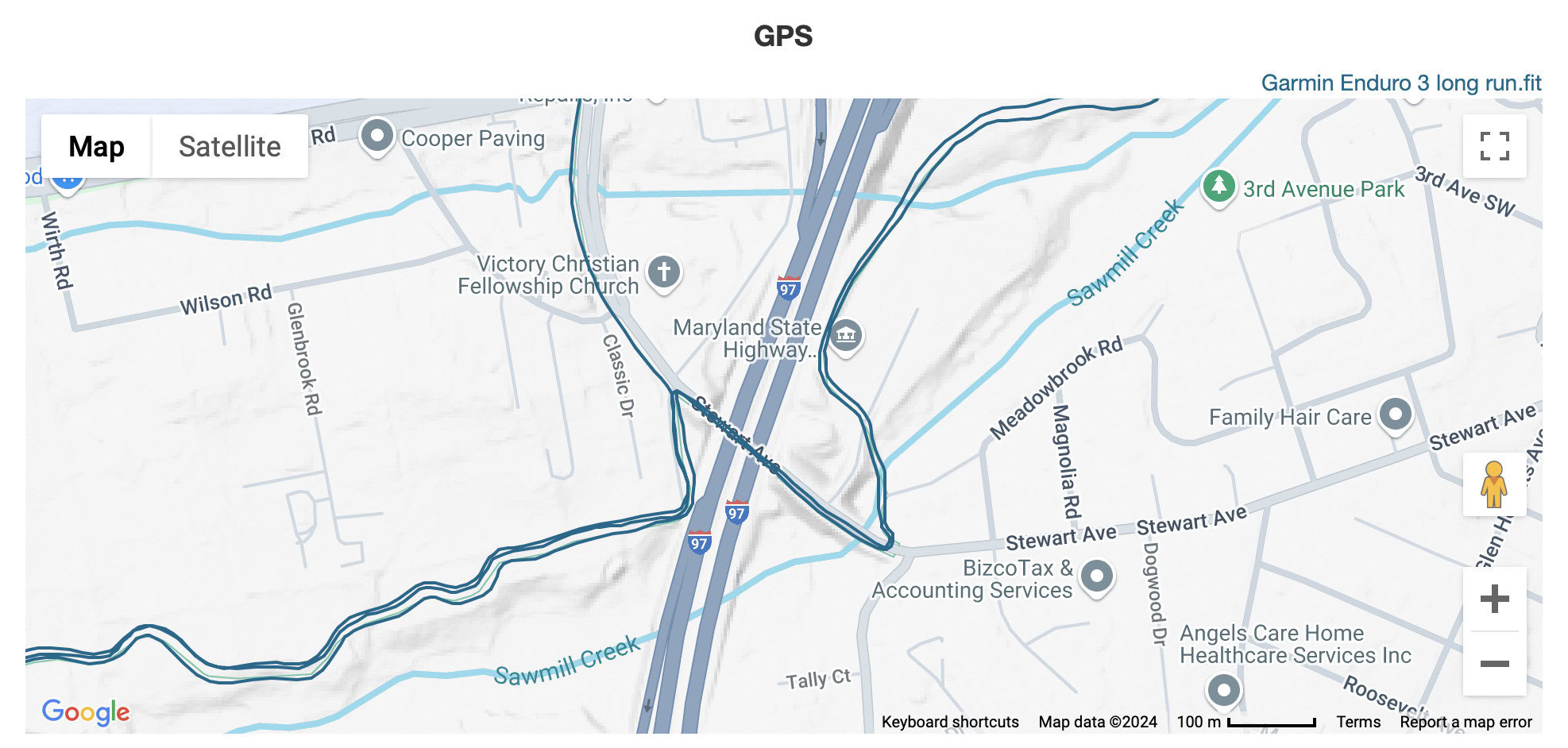
Ryan Haines / Android Authority
If you’re going to brag about a device’s battery life, it helps to know just how much juice a long run takes out of it. In my case, the answer was a mere 4% over the course of about three hours — not too shabby at all. That worked out to a rate of about 1.3% per hour, meaning I should manage around 75 hours of running between charges, which is way more than I log in an average month. Just for fun, I thought I’d check on the battery drain from an hourlong indoor bouldering session and found another surprise: The battery fell from 32% to, well, 32%. Because the Enduro 3 wasn’t tracking my GPS location or offering emergency services should I tumble off the wall, its battery drain barely shifted into first gear.

Ryan Haines / Android Authority
Granted, tracking a bouldering activity is about as lightweight as possible with the Enduro 3. Everything from choosing your difficulty and starting a climb to logging it as Completed or Attempted is done manually, and all the watch has to do is monitor your heart rate. Even still, I’ll take the fact that with 19% of its battery remaining, the Enduro 3 says I could track 55 more hours of climbing before I need a charge.
Eventually, though, I will need to charge my watch — realistically, I’ll do so before the Philadelphia Marathon, just in case — and it will remind me of my least favorite Garmin feature: The proprietary charging cable. I’m glad Garmin has graduated to a USB-C connector for more recent versions of its cable, but the four-pin setup is still a pain when everything else I own can be charged via the same setup. Thankfully, I don’t need a Garmin charger for a weekend away (or even a week away), but I’d still welcome the day I have a Qi2-enabled adventure watch.
The cost of extra adventures
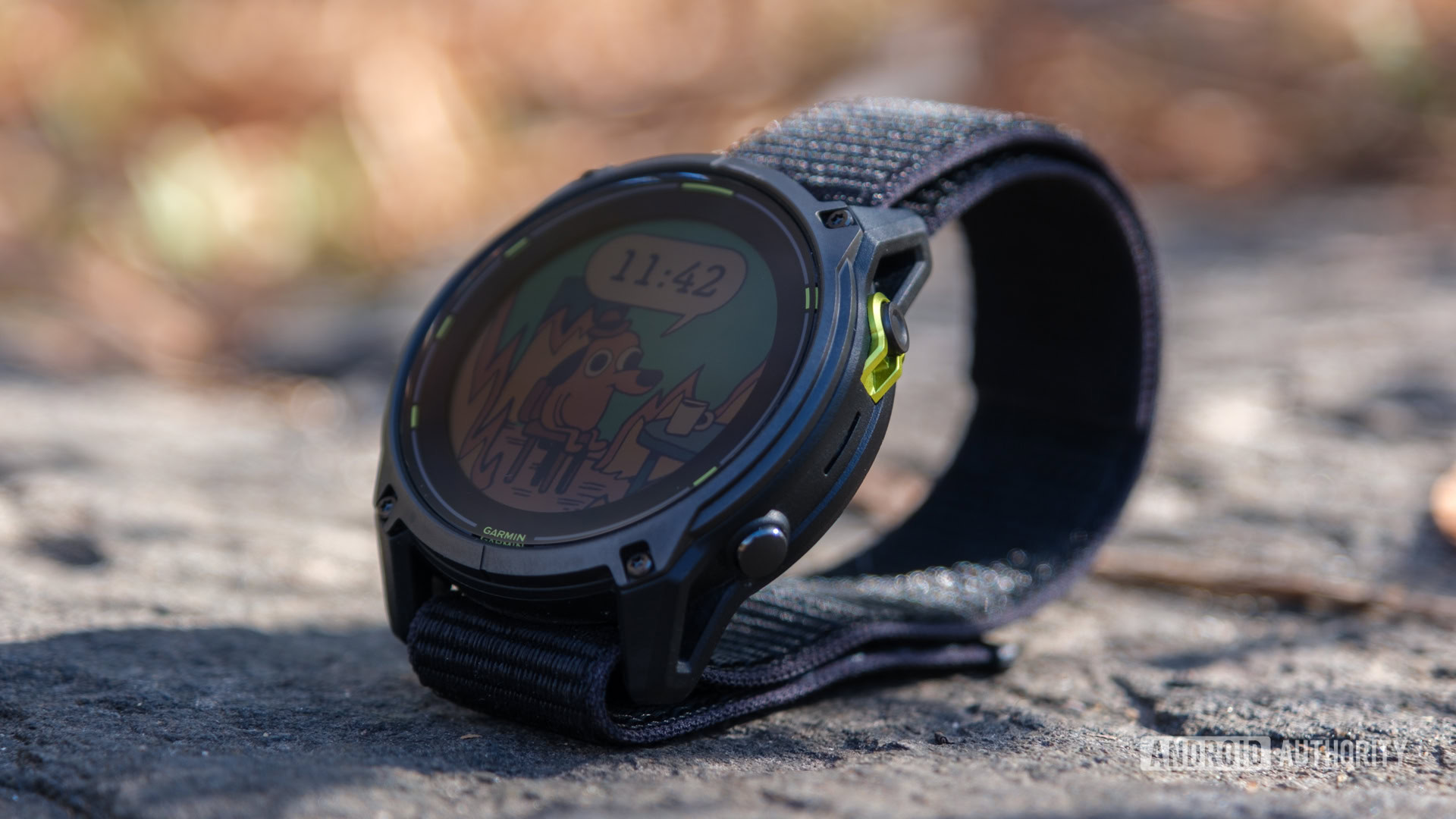
Ryan Haines / Android Authority
Of course, for the Enduro 3 to have this much of an edge in battery life over the Fenix 8, some sacrifices had to be made — most notably the lack of an AMOLED face. While most of Garmin’s recent adventure watches come with the bright new display as a standard feature (or at least an optional extra), the Enduro 3 only offers the classic Memory in Pixel (MiP) display of older watches. At first, I was slightly disappointed to drop back to the MiP days, but I can understand why Garmin opted for its older tech. It’s not as bright, nor does it have the same animations as the Fenix 8, thus allowing the Enduro 3 to bank a little bit of extra battery life.
Also, using an older, more familiar display technology means the Enduro 3 has a massive library of third-party watch faces. See, whenever third-party developers create a Garmin watch face, they have to optimize it for each new type of display, which is sometimes easier said than done. I’ve been using first-party Garmin faces on the Epix Pro 2 and Fenix 8 while wearing them, simply because there aren’t as many options for the AMOLED panels. With the Enduro 3, though, I was able to install the “This is fine” face that features everyone’s favorite cartoon dog in a burning room. It’s the same face I converted several friends to using while I wore the Enduro 2, and I’m glad to have it back, even if the animated fire might cost me a few hours of overall battery life.
Call me old, but I love the Enduro 3’s flashlight when I need to read a dark menu or look for something in my closet.
Unfortunately, one of the Enduro 3’s other omissions is one that I’d just gotten used to — there’s no microphone or speaker, which means this is an adventure watch, first and foremost. It misses out on the support for smart assistants like Gemini and Siri, and you can’t use the Enduro 3 to take calls from your wrist. Sure, you can still press a button to accept a call, but then you quickly have to grab your phone from your pocket. However, if you’re not coming to the Enduro 3 from something like the Venu or Fenix 8 you won’t have had this level of calling support on another Garmin to begin with. I miss it now that it’s gone, but I wouldn’t say that call and voice support are essential if you’re taking the Enduro 3 to its preferred home away from reliable cell coverage.
Thankfully, those sacrifices didn’t include changing the Enduro’s built-in LED flashlight. I’ve gotten used to the feature throughout my last few Garmin reviews, and it’s become one that I can’t live without. I don’t think I’d call the tiny light bright enough for a trail run in pitch darkness, but it’s come in handy in several non-life-threatening situations, like reading the printed karaoke list in a poorly lit bar or looking for a sweatshirt in my dark closet when I can’t be bothered to turn on the light. Granted, the LED light might stand up slightly better if you max out its brightness, but I tend to keep it halfway bright to save some battery.
The necessary sacrifices didn’t come for Garmin Pay, either — not that I expected them to. I continue to count on Garmin’s NFC support on a weekly basis — looking at you, Coros — especially when I finish a long run without my wallet at a farmers’ market and I’m practically begging for coffee.
Garmin Enduro 3 review verdict: So much time, so many places
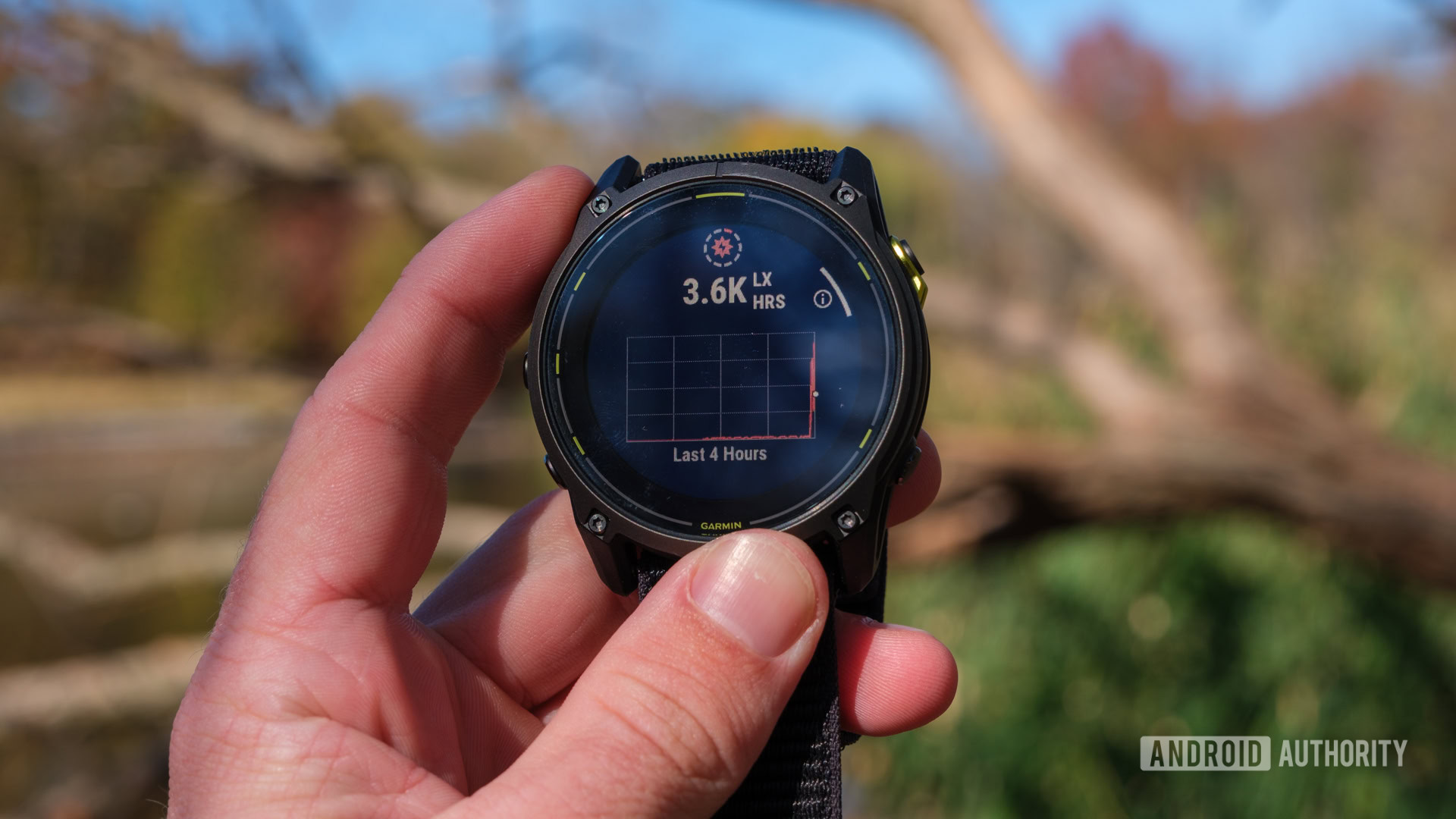
Ryan Haines / Android Authority
At the end of the day, I think the Garmin Enduro 3 will always be too big for me. It will always feel like a bit of a pancake on my wrist, and I’ll probably have to switch to something smaller whenever I’m living a bit more casually — but I don’t think I mind. Nowhere does Garmin bill this as anything less than an ultra-performance adventure watch, nor do I think it should be treated as one. In fact, I don’t think it’s a GPS watch that you need to buy unless you’re specifically ready to push it to its limits — limits that I haven’t run into just yet.
Are there adventurers who could massively benefit from the Enduro 3’s incredible battery life and mapping features? Of course. They’re the types who have accepted that their multi-day adventures will come with sleep-tracking results that would worry a therapist, and their Solar Intensity graphs look like a healthy heartbeat rather than the flatline with an occasional spike that mine tends to reflect. If Garmin’s Fenix 8 AMOLED is the best ‘ultra’ GPS watch on the market, the Enduro 3 is the best of whatever lies beyond that point. It even manages to reach that point while trimming some weight from the previous generation, adding a day or two of battery life, and dropping its launch price below the $1,000 threshold that Garmin’s very top watches reach.
If adventure is what you’re after, the Garmin Enduro 3 delivers, but it’s a little overpowered if your daily workout is a trip to the grocery store.
With those great adventures, however, come the omissions I mentioned above. This isn’t a watch that’s meant to compete with the Apple Watch Ultra or Galaxy Watch Ultra in terms of smart features. It’s not going to challenge Garmin’s own Fenix 8 AMOLED in terms of creature comforts or animations. It will get you to the trailhead and last from the time you lace up your hiking boots (or trail running shoes) to the time you finally shower, possibly a few days later. Avid divers will want to skip this one due to its lack of a depth sensor, and the sweatier among us will probably want to replace the UltraFit watchband, at the very least.
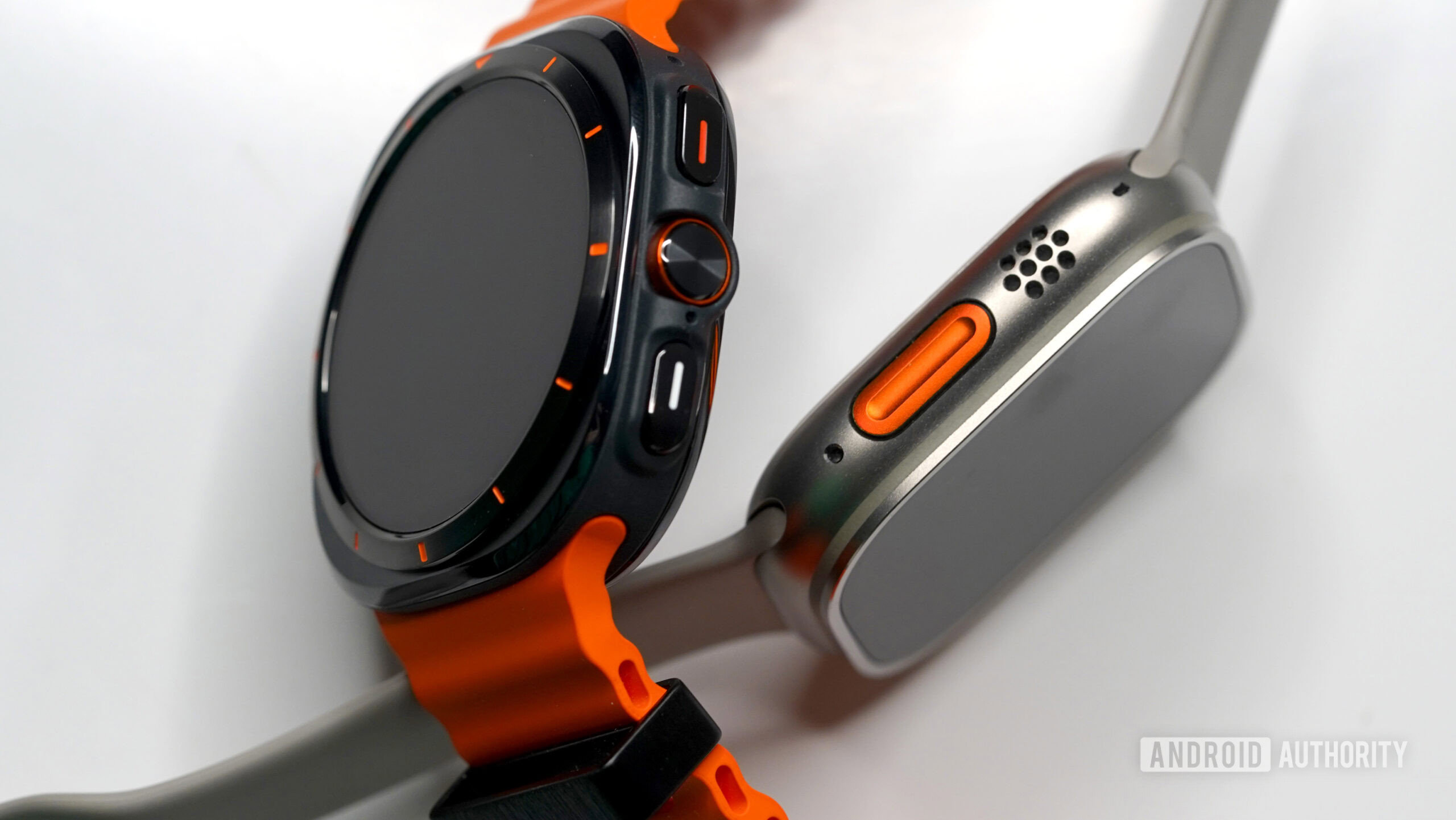
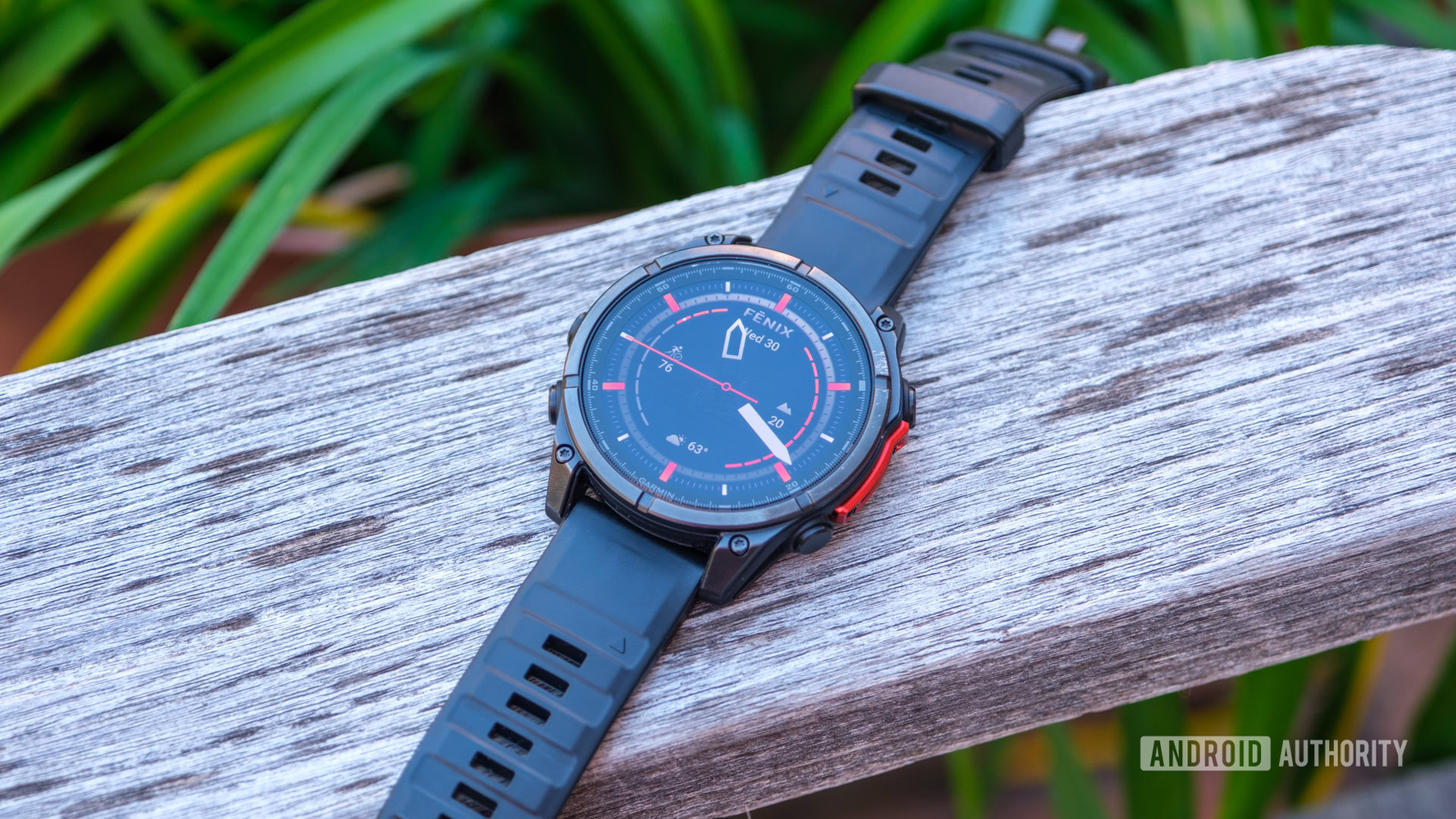
And, if you decide you have the budget for an Enduro 3 but want a little more quality of life, the good news is that all three watches I mentioned above are readily available. Any of the Apple Watch Ultra ($759.99 at eBay), Samsung Galaxy Watch Ultra ($472.98 at Amazon), or Garmin Fenix 8 AMOLED ($999.99 at Amazon) will slot right in for your adventures, but you’ll be able to wear them for the rest of the day, too. I’d still lean towards the Fenix 8 out of that trio, mainly because I bounce from Android to iOS and back again throughout the year, but you’ll probably find better integration from one of the first two if you’re a dedicated iPhone or Galaxy user. Just know that the Enduro 3 will have weeks — yes, weeks — of battery life remaining after you’ve charged any of its competitors.
Garmin Enduro 3
Incredible battery life • Built-in LED flashlight • Excellent mapping features
If adventure is what you’re after, the Garmin Enduro 3 delivers.
Lighter and more affordable than the Enduro 2, the Enduro 3 is a great buy for long treks away from home.
Comments
Source link






GIPHY App Key not set. Please check settings